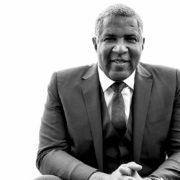BY Katie Reilly, Time
Robert F. Smith—the billionaire who pledged during a commencement speech last year to pay off the student debt of the Morehouse College class of 2019—is launching a new initiative to help ease the burden of student loans at historically Black colleges and universities (HBCUs).
The Student Freedom Initiative, a nonprofit, is aimed at addressing the disproportionate loan burden on Black students and creating more choices for students whose career options or further educational opportunities might be limited by heavy student debt.
“You think about these students graduating and then plowing so much of their wealth opportunity into supporting this student debt, that’s a travesty in and of itself,” Smith, chairman and CEO of Vista Equity Partners, said Tuesday during a TIME100 Talks discussion with Editor-in-Chief Edward Felsenthal.
Full article @ Time
KOLUMN Magazine – Context
Historically Black Colleges and Universities
Historically black colleges and universities (HBCUs) are institutions of higher education in the United States that were established before the Civil Rights Act of 1964 with the intention of primarily serving the African-American community. Most of these institutions were founded in the years after the American Civil War and are concentrated in the Southern United States. During the period of segregation in the United States prior to the Civil Rights Act, the overwhelming majority of higher education institutions were predominantly white and completely disqualified or limited African-American enrollment. For a century after the end of slavery in the United States in 1865, most colleges and universities in the Southern United States prohibited all African Americans from attending, while institutions in other parts of the country regularly employed quotas to limit admissions of blacks.
There are 101 HBCUs in the United States, including both public and private institutions (down from the 121 institutions that existed during the 1930s). Of these remaining HBCU institutions in the United States, 27 offer doctoral programs, 52 offer master’s programs, 83 offer bachelor’s degree programs, and 38 offer associate degrees.
In 2015, the share of black students attending HBCUs had dropped to 8.5% of the total number of black students enrolled in degree-granting institutions nationwide. This figure is a decline from the 13% of black students that enrolled in an HBCU in the year 2000 and the 17% that enrolled in 1980. This is a result of desegregation, rising incomes and increased access to financial aid, which has created more college options for black students. Deese Clock Tower at North Carolina A&T State University is the largest HBCU in the nation.
The percentages of bachelor’s and master’s degrees awarded to black students by HBCUs has decreased over time. HBCUs awarded 35% of the bachelor’s degrees and 21% of the master’s degrees earned by blacks in 1976–77, compared with the 14% and 6% respectively of bachelor’s and master’s degrees earned by blacks in 2014–15. Additionally, the percentage of black doctoral degree recipients who received their degrees from HBCUs was lower in 2014–15 (12%) than in 1976–77 (14%).
The number of total students enrolled at an HBCU rose by 32% between 1976 and 2015, from 223,000 to 293,000. In comparison, total enrollment in degree-granting institutions nationwide increased by 81%, from 11 million to 20 million, during the same period.
Although HBCUs were originally founded to educate black students, their diversity has increased over time. In 2015, students who were either white, Hispanic, Asian or Pacific Islander, or Native American made up 22% of total enrollment at HBCUs, compared with 15% in 1976.
In 2007, the Thurgood Marshall College Fund published a study of minority recruiting practices by Fortune 400 companies and by government agencies that found that 13% of minority college graduates were recruited from HBCUs while 87% of minority college students were recruited from non-HBCU institutions.
In 2006, the National Center for Education Statistics released a study showing that HBCUs had a $10.2 billion positive impact on the nation’s economy with 35% coming from the multiplier effect.
Historically Black Colleges and Universities. (2020). Retrieved June 24, 2020, from Wikipedia.

